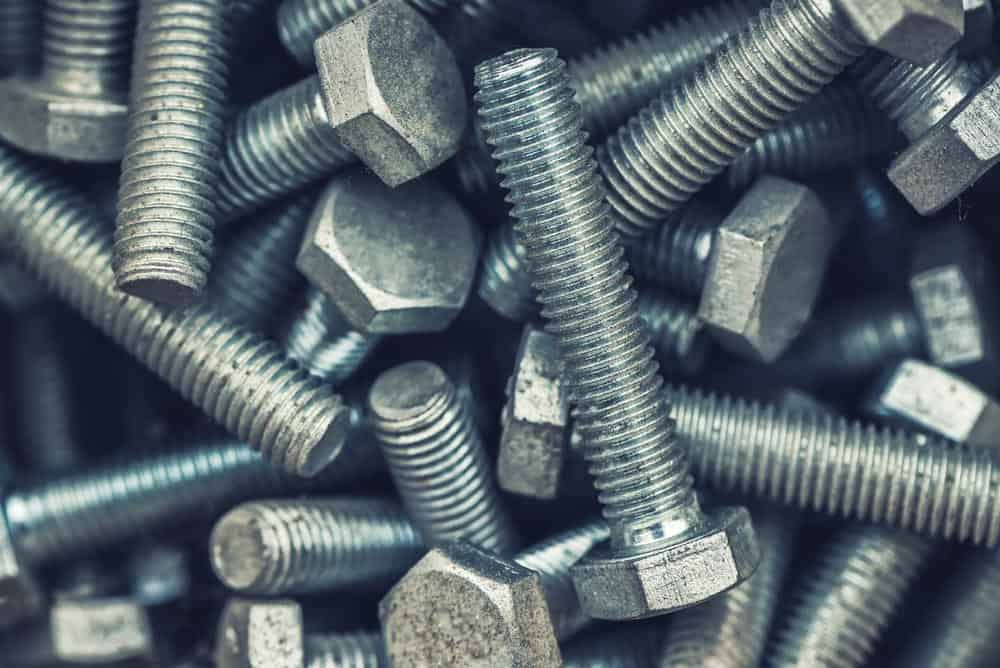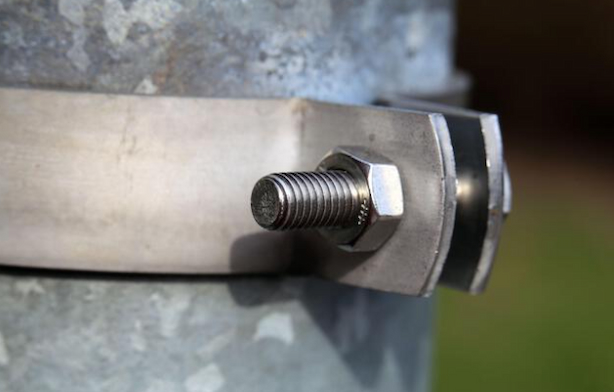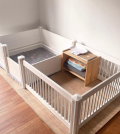Everything You Need to Know About Hex Head Bolts
There’s a wide variety of fasteners, from different types of bolts, nuts, screws and nails to less obvious items like rivets, pins and clips. They’re all used to join two objects together. But how they do this varies. The different designs, shapes, sizes, and materials, and whether fasteners are threaded or not will impact holding strength and whether the particular fastener you’ve chosen is up to the task.
Contents
What is a Hex Head Bolt?

Hex bolts get their name from the six-sided hexagonal head. They’re a type of threaded bolt. The threading can be along the whole length to produce fully-threaded hex head bolts or along part of the bolt leading to partially-threaded bolts. Both designs allow for easy access with a wrench or socket, meaning quick installation or removal.
Hex bolts can be used on their own, or more often with a compatible nut. And they’re used in areas where tight tolerances and high holding strength are required. Hex bolts come in a variety of sizes, materials and finishes (besides the partial or full threading) and this makes them one of the more common types of fasteners.
Where are Hex Bolts Used?
Hex bolts are some of the more common fasteners. They create a strong bond between objects of the same or different materials. They can be used when fastening steel, wood, plastic and other materials. They’re commonly found in the automotive industry, in general building and engineering projects, in building, bridge and road construction, when assembling wooden frames, in different types of machinery and more. They’re capable of securing heavy items, are favoured over other fasteners such as all-thread rod and nut combos in smaller anchoring tasks, and where vibrations and shear can cause the fastener to break. Here partially threaded hex head bolts hold the upper hand due to their exceptional strength. The choice of different materials also makes them widespread in both indoor and outdoor fastening applications.
Using Hex Bolts

One of the benefits of hex head bolts is how versatile and easy to use they are. The hexagonal head means they are ideal for fastening in tight spaces, such as in machine assembly. The heads can be accessed from different angles, so are easy to tighten and loosen with basic tools. This design feature also allows for the required torque, or tightening strength. Bolts can be used on their own, or a nut to adjust the bolt in place and this helps with holding strength.
Choosing the Right Hex Bolt
As mentioned, hex bolts come in full or partial threading and this determines where they’re used. Other factors that will impact which bolt you go for are the materials the hex bolts are made of, and of course, overall lengths and diameters.
Threading
This refers to the helical structure making up the bolt body. Partially threaded bolts have an unthreaded shank just under the head and this is the area that bears vibrations, impact and other forces between the two fastened parts. They are commonly found in motor mounts, alternators and other automotive parts. Fully-threaded bolt types are often used in pre-threaded holes where the threading spreads the weight loading across the whole length of the bolt. This makes larger, fully-threaded bolts ideal in heavy-duty applications.
Materials and Finishes
Anyone looking for hex bolts needs to be wary of the materials they’re made of and the finishes they come in. Stainless steel hex head bolts are the most common. These have good corrosion resistance even without additional treatment and can be used outdoors. A cheaper alternative is steel bolts with zinc plating, and these are often for indoor uses. Hot-dip galvanised bolts fare better against water and resulting rust, but the coating gives them a rough, dull grey finish. There are also bolts with black oxide treatment that also helps with corrosion and looks good. The grade of the steel is marked on the head.
Chrome and nickel-plated steel are smooth and polished and ideal for neat appearances. For decorative applications, buyers will find hex bolts in brass and bronze. Besides the colours and moderate corrosion resistance, these are also typically quite a bit more expensive for the same sizes compared to steel.
Sizing
Sizes in bolts refer to the length, thread size and thread pitch. Length is measured as the distance between the end of the bolt to the head. This can be between 10 and 2500mm. The thread size is the diameter of the threading, and should roughly correspond (or be smaller) to the hole in which the bolt will be used. Thread sizes are often stated as metric units, and marked ‘M’. Common thread diameters range from 6 to 100mm. Lastly, thread bitch can be fine or coarse, depending on the length of the bolt, and it too is stated in millimetres. This determines the type of the corresponding nut that’s to be used.
So, a hex head bolt specced as “M10-1.50x100mm” means the hex head bolt has a 10mm thread size, a 1.5mm thread pitch and is 100mm long from tip to head. Additional information can state the steel grade and whether the bolt has been treated. Metric units are used for most industrial applications, but imperial measurements are also found on some bolts.






